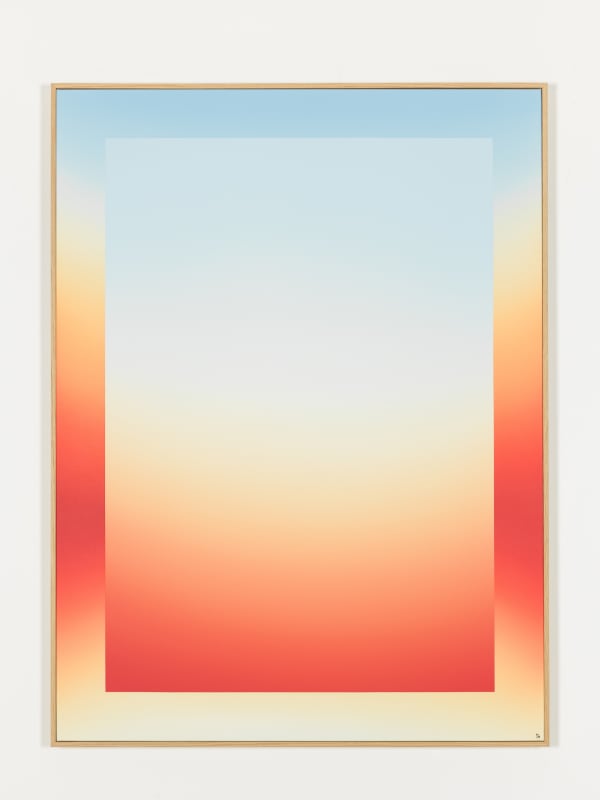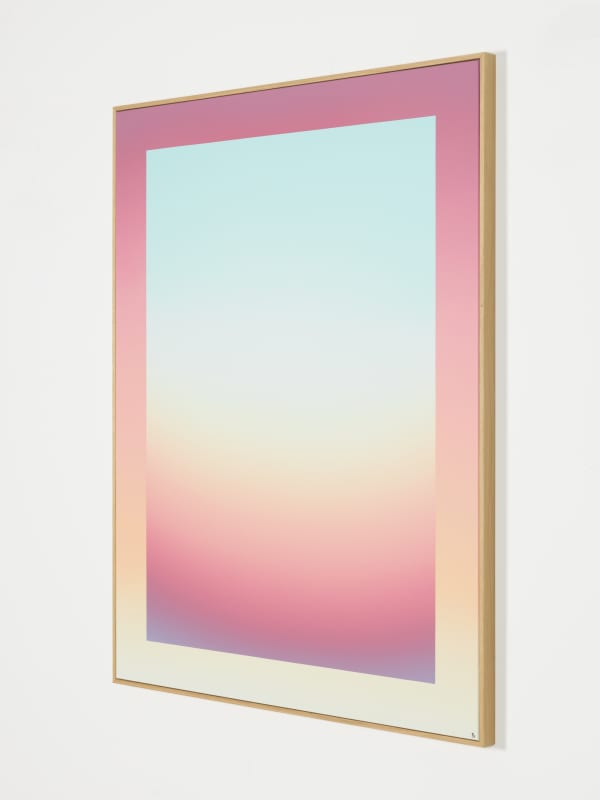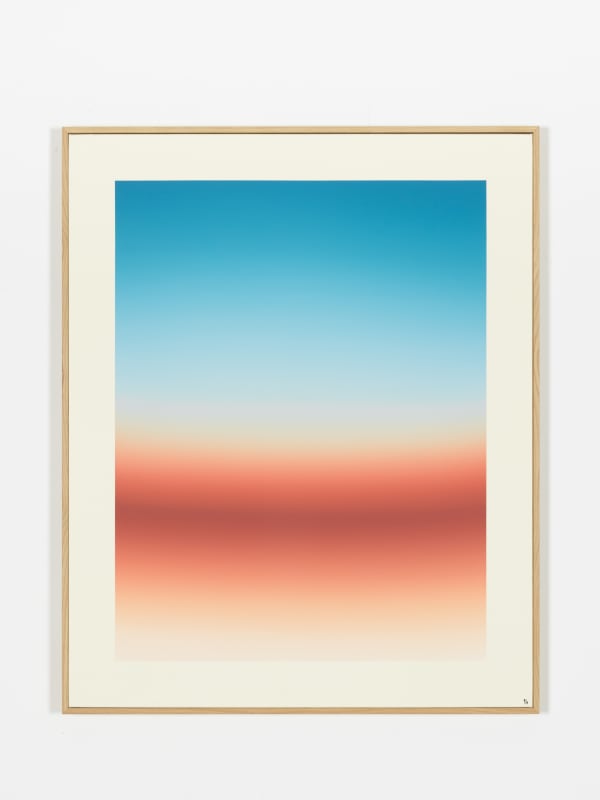Perspective: By Kean
Past exhibition
Overview
Macadam presents French artist Kean's first focus exhibition in Belgium. Kean's immaculate gradients immerse us in different atmospheres as invitation to escape through a canvas that serves as a window onto another world.
Jordan Tran (1988) is a French painter who currently lives and works in Mulhouse, France. Self-taught, Jordan developed a highly personal approach that led him from his original urban space graffiti interventions to abstract landscape painting.
Presented in vast and enticing ranges of colors, his paintings underline immaculate perfection of gradients that immerse us in different atmospheres exuding a rare sensuality. His works are the result of a method patiently developed, intertwined with his various artistic practices.
Initially, Jordan was fascinated by the color gradients that enlivened the backgrounds of his graffiti, on which he began to focus, gradually abandoning lettering. With time, the artist also felt the need to capture through photography the intense sensations triggered by the sight of a landscape, the contemplation of distant horizons, and the observation of subtle variations of light and colors in the sky throughout the day and night. Photography led Jordan to develop formal constants for his paintings, such as dividing the surface with a horizon line, as well as framing his canvases with white margins, like a print.
Jordan’s mastery of gradients is evident in a very nuanced way through subtle color blending. In his paintings, colors overlap in thin layers of paint, blending into each other seamlessly. This is a long and patient process that gives the artist’s abstraction a unique density, while evoking the deep blue of a night sky, the orange-yellow of a scorching summer sun, or the rosy hues of a sunrise.
Jordan’s paintings have a strong emotional power, encouraging the viewer to dream and contemplate. They are an invitation to escape through a canvas that symbolically serves as a window onto another world. The transition from the real world to an imaginary and dreamlike dimension is materialized through the contours that surround the artist’s gradients, abstractly recalling the oval shape of a porthole, the quadrangular shape of a window, or the vertical shape of a door.
Tran’s works are part of the legacy of the American Color Field movement, but also, and more importantly, of the Californian Light and Space movement, whose artists, such as the famous James Turrell, have made the study of perceptual phenomena, particularly light and space, central to their concerns.
Works







